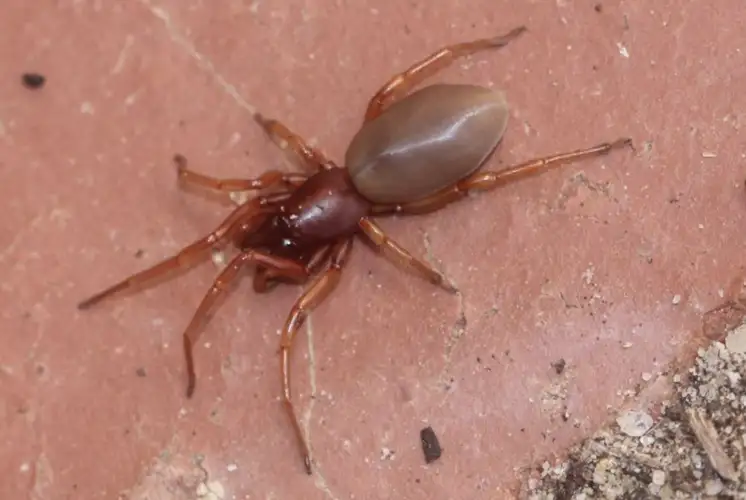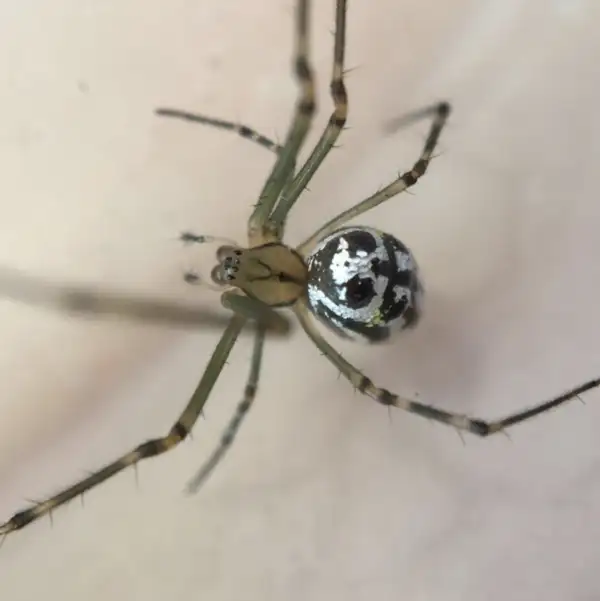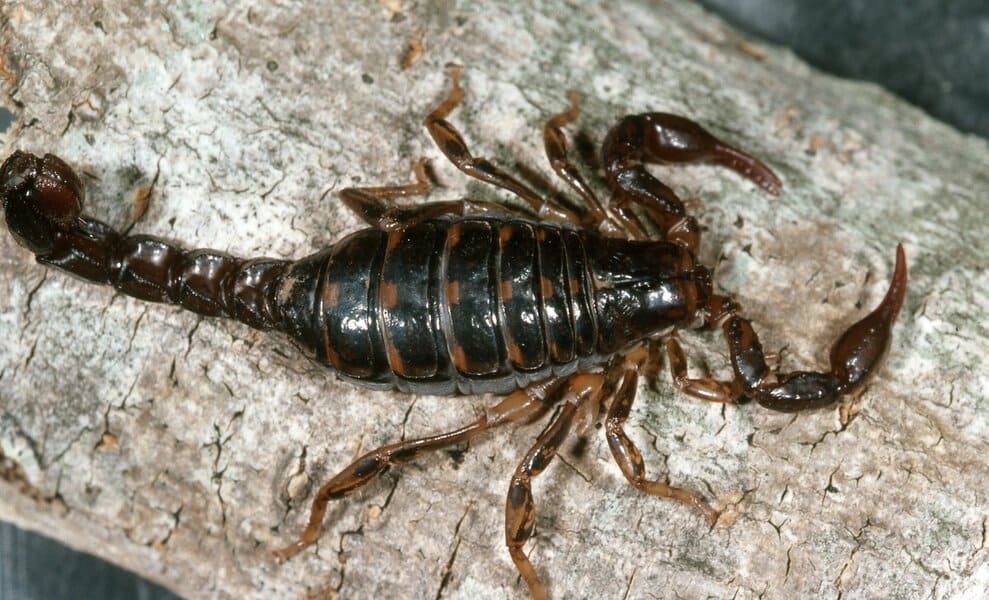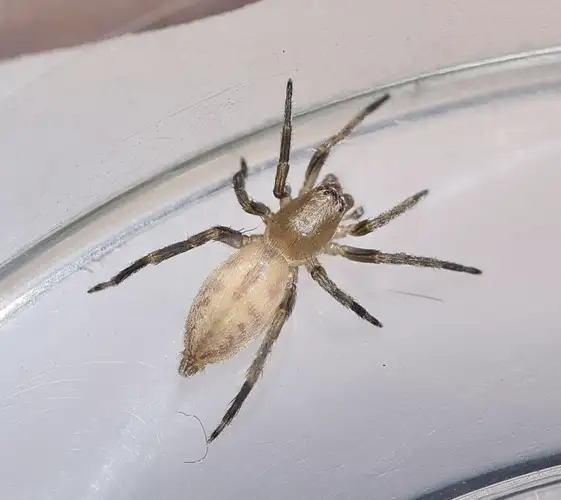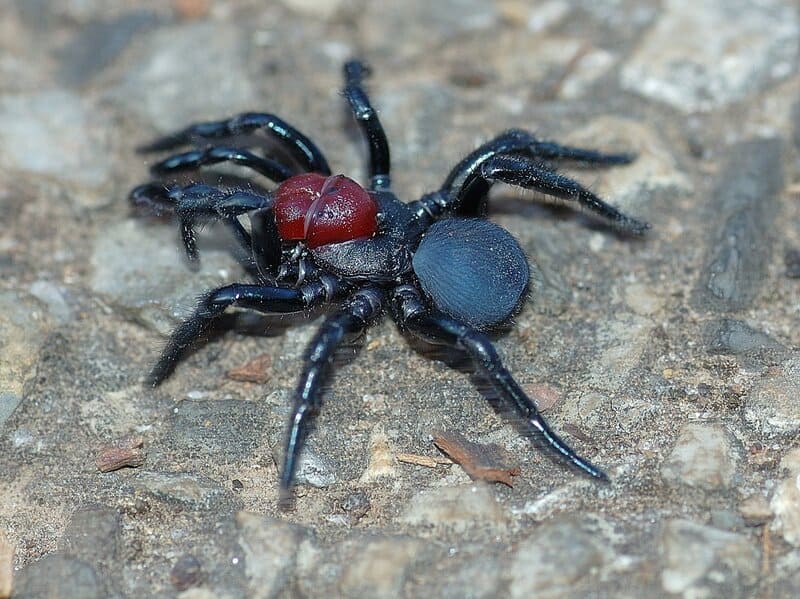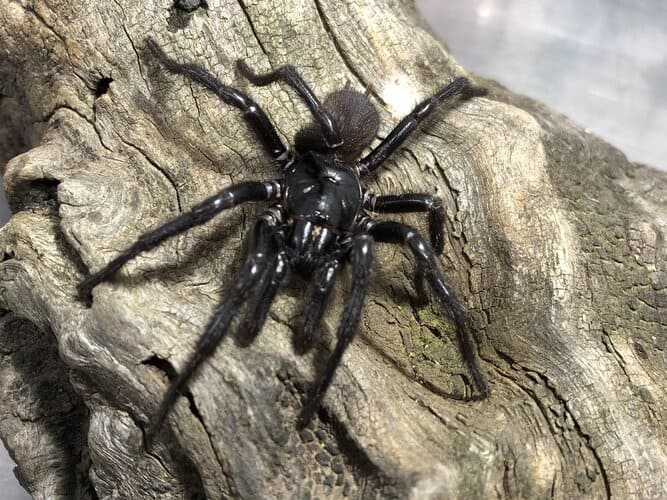Net-casting Spiders
IUCN
Not evaluatedBasic Information
Scientific classification
- name:Net-casting Spiders
- Scientific Name:Deinopidae (e.g. Deinopis, Menneus)
- Outline:Arthropoda
- Family:Deinopidae Deinopis
Vital signs
- length:Body length about 10–25 mm; leg span several centimetres
- Weight:Light; typically tens to a few hundred milligrams depending on species and individual
- lifetime:Usually 1–2 years
Feature
Holds a small rectangular web and casts it over prey; nocturnal hunters with well-developed night vision.
Distribution and Habitat
Tropical, subtropical and warm temperate forests, shrublands and gardens worldwide, hunting at night among vegetation.
Appearance
Elongated, slender body and long legs; grey-brown, mottled colours providing twig- or bark-like camouflage.
Details
Net-casting spiders are remarkable predators in the family Deinopidae. Instead of building a large stationary orb web, they construct a small, rectangular catching net which they hold between their front legs and literally “cast” over passing prey. Because of this behaviour they are also known as “ogre-faced spiders” or “throw-net spiders”.
Basic Biology
Scientific scope: Family Deinopidae – net-casting spiders (genera such as Deinopis and Menneus)
Size: Most species have a body length of about 10–25 mm, with long, slender legs giving a leg span of several centimetres.
Longevity: Typically 1–2 years, with adults surviving for one or more breeding seasons.
Net-casting Hunting Technique
At night, a net-casting spider spins a small, rectangular web made of highly elastic, sticky silk. The spider hangs from a horizontal line, holding the net with its front and middle legs in a loose rectangle beneath the body, ready to strike.
When an insect walks or flies underneath, the spider rapidly lunges downward, stretching the net and dropping it over the prey. Some species can also swing the net onto a nearby wall or twig to capture insects resting on surfaces. Once entangled, the prey is quickly wrapped and bitten.
Vision & Sensory Adaptations
Many net-casting spiders, especially those in the genus Deinopis, have enlarged anterior median eyes that give them excellent night vision. These eyes act like high-sensitivity lenses, allowing the spider to detect subtle movements in low light and to aim its net with impressive accuracy.
Appearance
Net-casting spiders have an elongated, slender body, with long, delicate legs suited to hanging in space and launching sudden strikes. Colouration is usually grey-brown or bark-like with irregular mottling, helping them blend in as a twig or piece of debris during the day. Some species hold their legs together in a stick-like posture when resting.
Distribution & Habitat
Members of the Deinopidae occur in tropical, subtropical and some warm temperate regions worldwide. They live in forests, shrublands, woodland edges and even gardens and roadside vegetation. By day they typically rest camouflaged against branches or foliage; at night they set up their hunting lines and nets.
Venom & Human Interactions
Net-casting spiders possess venom for subduing insect prey, but they are relatively small and bites to humans are very rare. When they do occur, symptoms are usually limited to mild local pain or irritation. These spiders are shy and non-aggressive, and are not considered dangerous to healthy people.
References
Framenau, V.W., B.C. Baehr and P. Zborowski. 2014. A guide to the spiders of Australia. New Holland Publishers.
York Main, B. 1976. Spiders. William Collins Publishers Pty Ltd, Sydney NSW.
FAQ
Q1. Are net-casting spiders dangerous to humans?
No. They are not regarded as medically significant; bites are extremely uncommon and generally mild.
Q2. What does their “net” look like?
It is a small, rectangular sheet of sticky silk held between the spider’s front legs, rather than a large orb web fixed in place.
Q3. Why are they sometimes called “ogre-faced” spiders?
Some species, especially in the genus Deinopis, have very large forward-facing eyes that give them a striking, “ogre-like” appearance.
Q4. Where might I encounter net-casting spiders?
They are most often found at night in forest or garden vegetation in tropical and subtropical regions, hanging from a line while holding their net.






